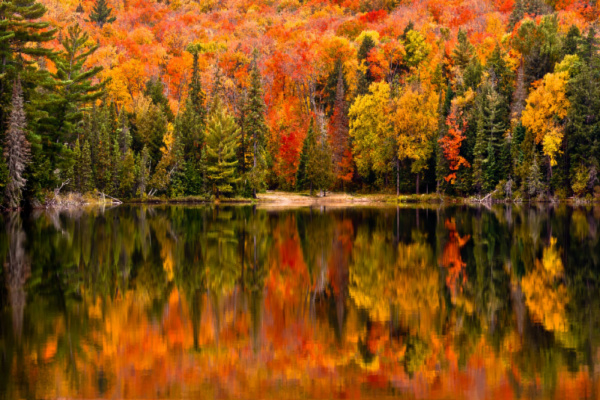As autumn leaves begin to transform the landscape into hues of red and gold, the weather patterns across the United States will also start to shift. However, for many eagerly awaiting the arrival of sweater weather and cool, cozy evenings, it may feel like summer is overstaying its welcome.
As AccuWeather reports, Meteorological autumn begins on Sunday, Sept. 1, followed by the arrival of astronomical fall at 5:43 a.m. PDT on Sunday, Sept. 22. Regardless of which date you consider the start of the new season, AccuWeather’s team of long-range forecasters has one word for the upcoming season: Warm.
When will cool air replace the summer heat and humidity? Will this year’s tornado count continue to rise well above the historical average? Is there a chance for some snowflakes to fall later in the season? Find out the answers to these questions and more with AccuWeather’s 2024 U.S. fall forecast.
Fall to act like ‘Second Summer’ across most of the US
A warm autumn is expected for nearly all of the country this year as the transition from summery to fall-like weather takes place slower and much later than usual. “Outdoor projects and activities which you would typically see winding down during the fall season will continue well into the season for many areas,” AccuWeather Long-Range Expert Paul Pastelok said.
A “flash drought” developed in part of the East over the summer amid long stretches of hot and dry conditions, particularly from southern Pennsylvania through the Carolinas. Drought can linger in parts of this region through the start of fall before tropical rainfall and late-season thunderstorms bring more dramatic improvement.
Dry conditions will also lead to an elevated risk of wildfires through the first half of the season for parts of the Great Lakes and Northeast. Wildfires will be a bigger concern across the West, especially in California where the dry season will last longer than it did in 2023. “Though the number of fires and acreage [burned] may fall just below average levels, it can be more intense than last year through midfall,” Pastelok said.
The Pacific Northwest is the only region where AccuWeather’s team of long-range forecasters is predicting an early arrival of fall-like weather, including some early season storms. The arrival of cooler, wetter weather will help to put an early end to the short but intense wildfire season across parts of Washington, Oregon and Idaho.
Tropics could boost Tornadoes and Severe Weather
Fall features a second severe weather season as waves of cold air begin to dive southward, clashing with the warm and humid air entrenched across most of the central and eastern portions of the nation.
This year has already been extremely active in terms of severe weather, including over 1,400 tornado reports, higher than the historical average for the entire year. An uptick in tropical storms and hurricanes can boost the tornado count even higher. “September tornado numbers can be mainly from tropical systems impacting the U.S.,” Pastelok said. AccuWeather is predicting a well above-average tropical season with the potential for multiple landfalling systems in the United States.
Beryl was a prolific tornado-producing hurricane, and additional tropical strikes could boost the 2024 tornado tally even further, making it one of the most active years for severe weather in recent history. A busy weather pattern is also in the offing for the Midwest and mid-Atlantic in September and October which will spark episodes of severe weather. The primary dangers are expected to be damaging wind gusts and hail, but a few tornadoes are also likely.
As the calendar flips to November, the severe thunderstorm risk will shift southward, focusing on the southern Plains, Gulf Coast states and parts of the Ohio Valley. Storms in these areas will be a double-edged sword, threatening lives and property while also delivering rain to areas experiencing drought.
Will it Snow this Fall?
As the hot and muggy summer air gradually gives way to chilly autumn air, people might start wondering when the first snowflakes of the season will fall. However, with a warm autumn expected across large parts of the country, it could be quite some time before the first snowflakes make their appearance.
“There should not be many surprises as far as snow in October, mainly confined to the highest elevations in the West,” Pastelok said. As a new weather pattern emerges, the chances for snow will increase slightly in November, but only in the Rockies, far northern Plains and the coldest spots of the Upper Midwest.
Some snow could also fall in the higher elevations of the Northeast, but Pastelok noted that “snow is not expected to be a big concern” for the more populated areas in the lower elevations.
—
Photo Credit: James William Smith / Shutterstock.com
